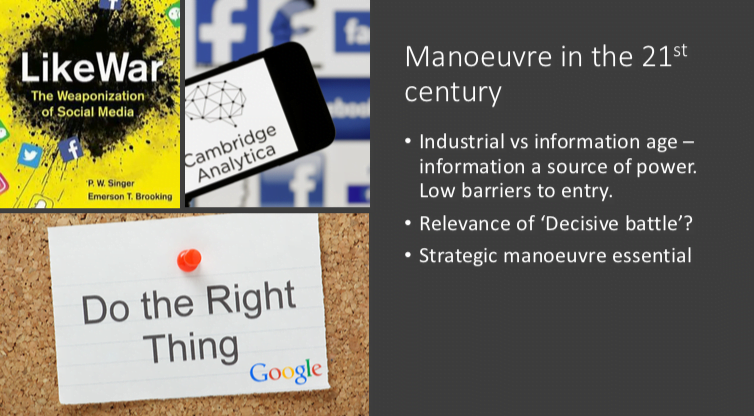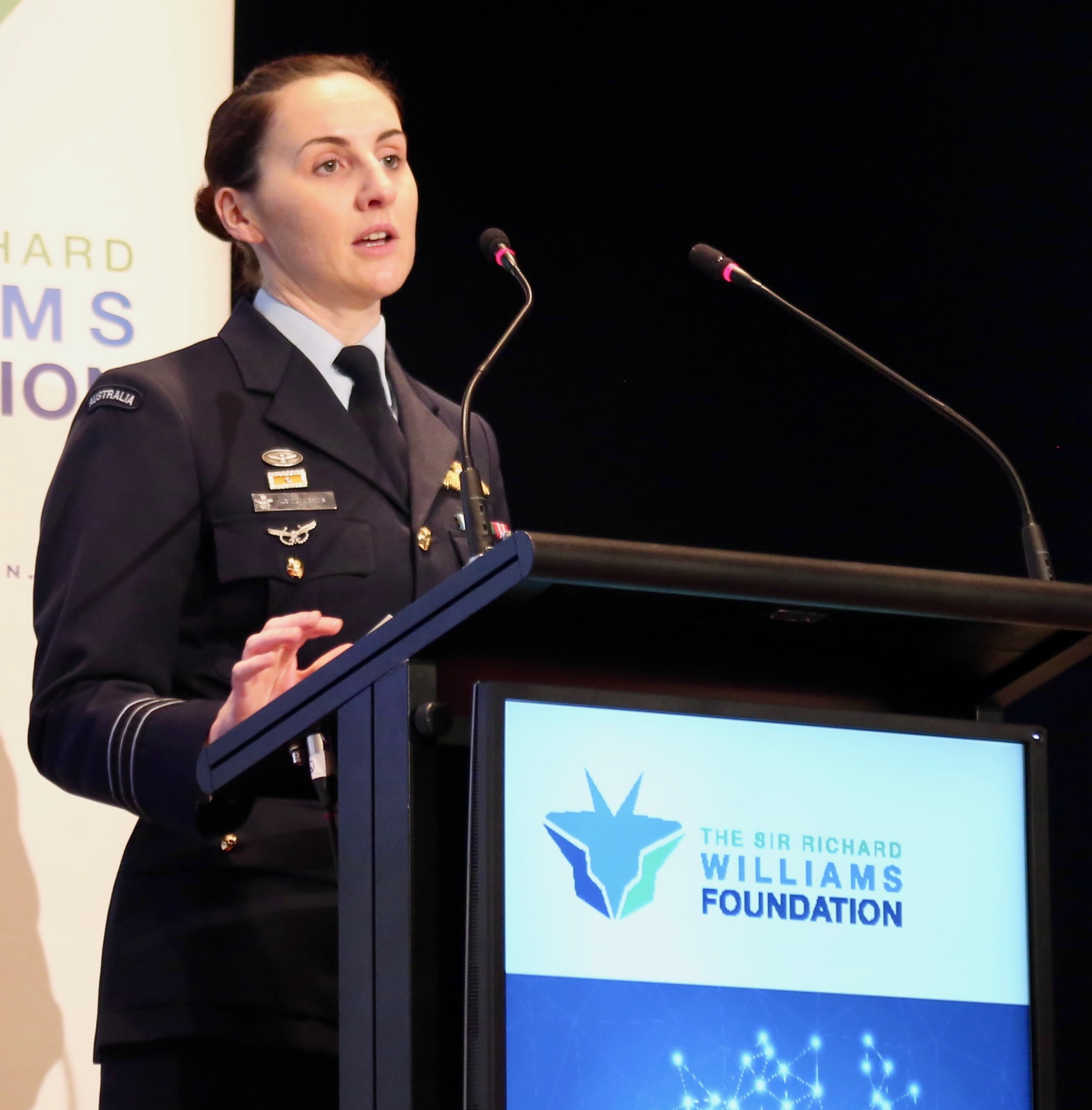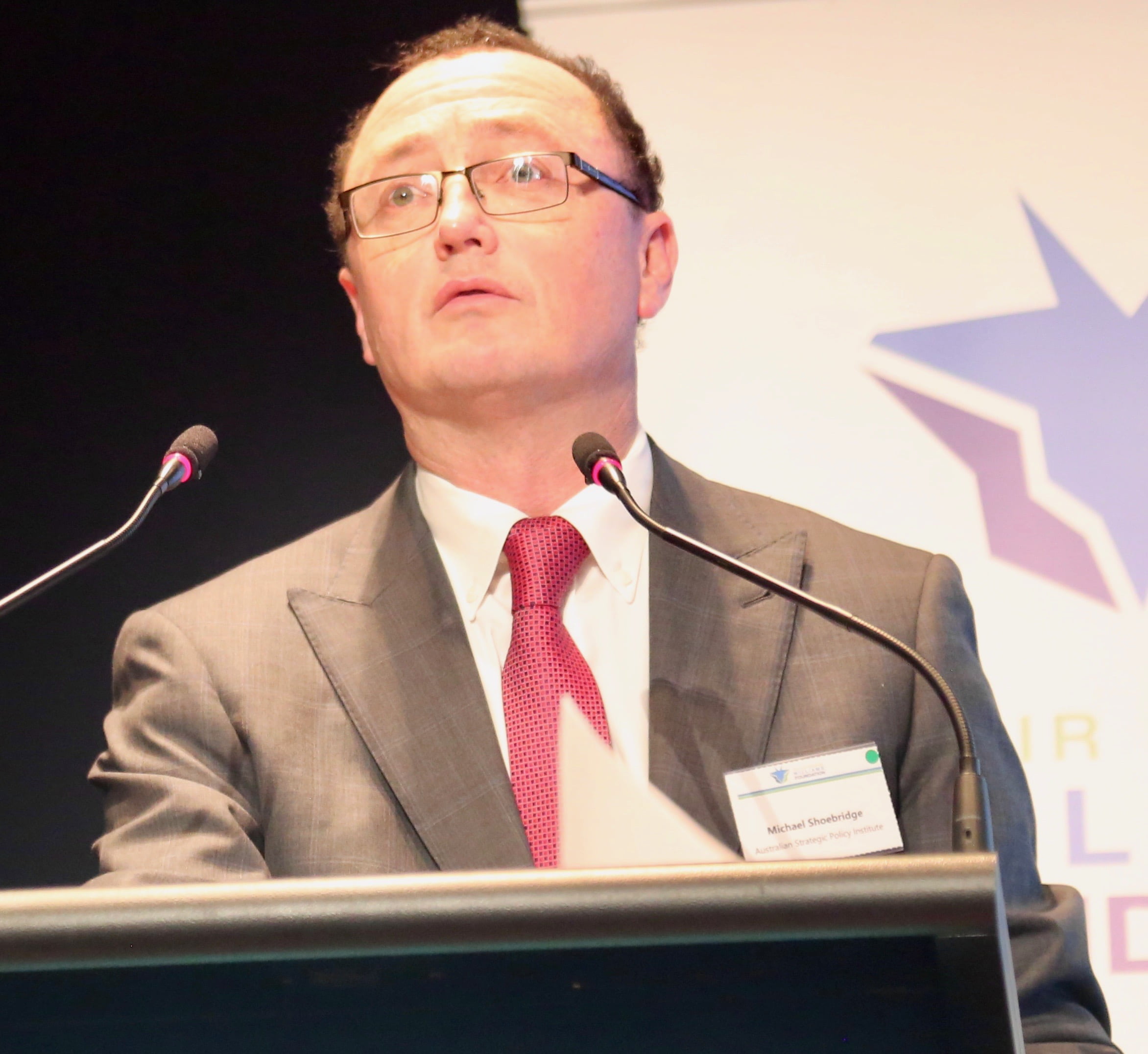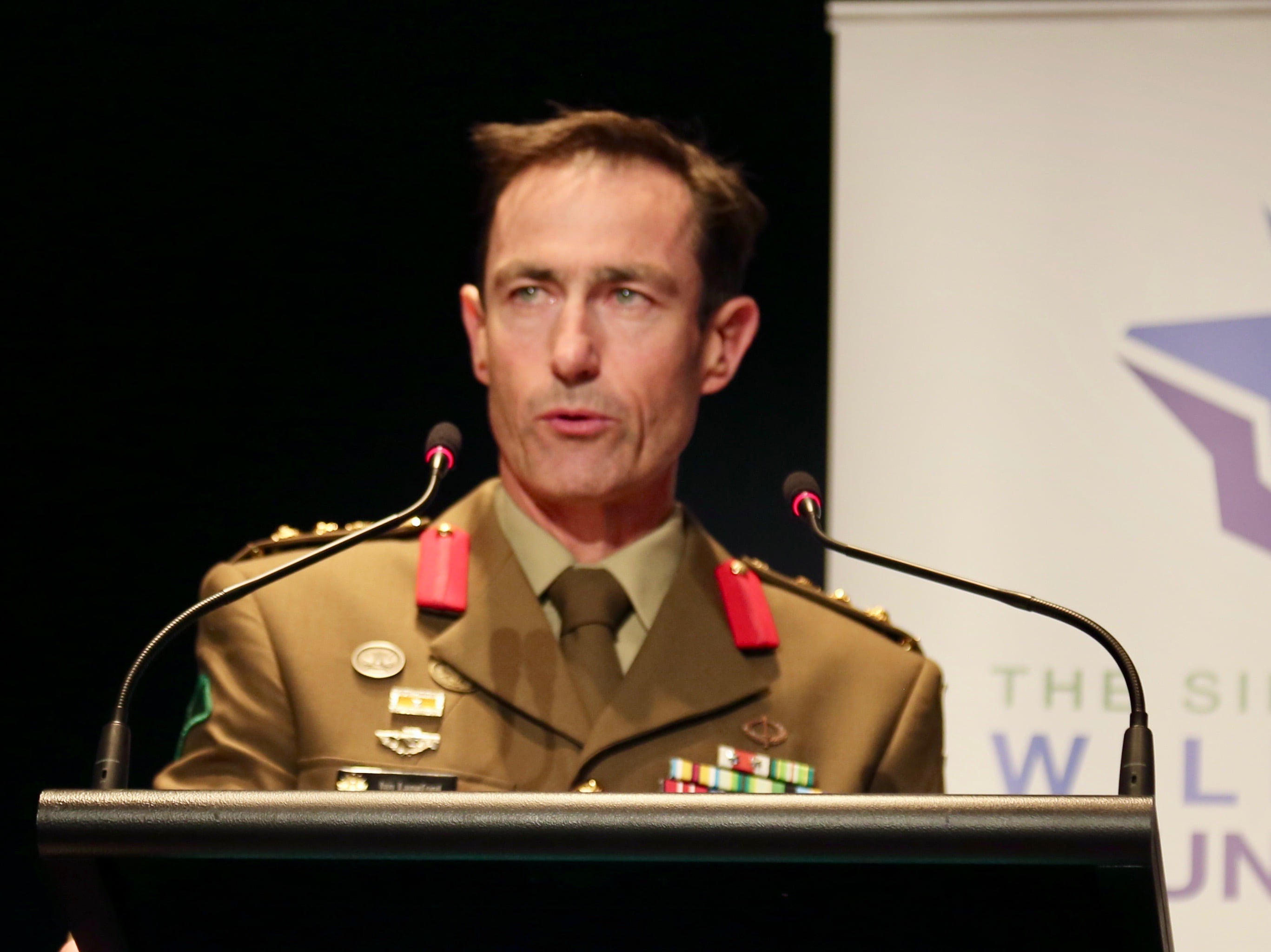By Robbin Laird
The Williams Foundation Seminar held on October 24, 2019 focused on the requirements of fifth generation manoeuvre.
At this session, the focus was upon the changing nature of the regional context for Australia and how the fifth generation force needed to evolve to operate effectively in the dynamically changing region.
A key question is how best to provide for the continuous change which an evolving integrated distributed force clearly needs to gain the decisive advantage needed in a contested region?
A key focus during the day was to examine how the manoeurvrist approach was morphing into the evolving 21st century combat force for the liberal democracies in dealing with the challenges posed by the 21stcentury authoritarian powers.
The scene setting presentation for the seminar was provided by WGCDR Joe Brick of the Australian War College. She provided a look back to inform the way ahead for Australia and its allies to position themselves for decisive advantage in 21st century conflict.
Her focus was upon how to gain the strategic advantage by leveraging ADFcapabilities to operate more rapidly in the battlespace and with tools which will allow them to gain phycological as well as physical advantages. She quoted William S. Lind to highlight that maneuver is “a style of warfare marked by obtaining positional advantage and moving faster than the enemy.”
WGCDR Brick argued that the ADF needs to operate from a “manoeuvre mindset.”
Here the focus is upon obtaining a position of advantage by being able to attack the mind of the adversary.
It is crucial to prepare the battlespace in such a way to gain an advantage even before a battle.
She underscored that the ADF and its allies are shifting from an industrial to an information age concept of maneouver warfare where information is a key source of gaining strategic advantage.
How to shape information dominance is a key part of the evolving approach to maneouver warfare.
WGCDR Brick cited the Australian Army’s doctrine of accelerated warfare: “Accelerated warfare means owning the speed of initiative to outpace, out-manoeuvre and out-think conventional and unconventional threats. It requires excellence in the art and science of decision making….”
A key element of shaping such a capability revolves around the kind of Command and Control which the force can exercise in multi-domain operations.
This was the topic of the presentation of the Commander of the RAAF’s Air Warfare Centre, AIRCDRE Phil Gordon.
This is how he defined fifth generation manoeuvre:
“The ability of our forces to dynamically adapt and respond in a contested environment to achieve the desired effect through multiple redundant paths. Remove one vector of attack and we rapidly manoeuvre to bring other capabilities to bear through agile control.”
In his presentation, he started by discussing what is new and what is not in terms of 21st century manoeuvre warfare.
This slide captured how he addressed this issue.

He then addressed how he saw the C2 piece of this as a crucial glue holding together mission success.
The following slide captured how he conceptualized this dynamic.

He argued as did Air Marshal Hupfeld in his presentation later in the day that this was not a static achievement, but fluid and dynamic and required mastering the art of transient advantage against the adversaries we are confronting today.
This is how he highlighted the dynamic learning curve which the force and its technology needs to go through to achieve this outcome or capability:

Michael Shoebridge, Director – Defence, Strategy & National Security, of the Australian Strategic Policy Institute, then underscored the central salience of shaping force structure design which would enable the further transformation of the ADF.
He addressed how the ADF would be able to execute the kind of mission command which AIRCDRE Phil Gordon and his staff at the Air Warfare Centre were working on for the RAAF and the ADF as its transformation unfolded.
Shoebridge underscored what he sees as key elements for ongoing transformation for the ADF in the period ahead.
He argued that the ADF and its core allies have gone through the past twenty years of warfare that have little to do with the competition with the 21st century authoritarian powers.
This is a very different environment in which preparing for and engaging in direct competition with advanced authoritarian states is quite different from the land wars in the Middle East.
This creates very significant differences for the ADF and its allies from the recent past.
For example, warfare in the electromagnetic spectrum is to be assumed and expected.
C2 for operations will be contested.
The supply chains will be challenged and disrupted in operations.
And the strategic shift entails the enhanced need to provide for the direct defense of Australia as well.
“We have a bubble of fifth generation capability, such as the F-35, but we need to deepen our capabilities more generally.”
He argued that force design needs to underscore the ability of the ADF’s key force elements “to disperse and aggregate rapidly and easily.”
He argued that platforms like the F-35 need to become transformed into “super users” which can distribute not only information but lead distributed operations “which are not allowed under current rules of engagement.”
The coming of autonomous systems needs to be integrated into the disaggregated force as well.
“We will need a new data and information architecture to guide the way ahead.”
“And we will need a system which can works at the tactical edge effectively.”
WGCDR Joe Brick had mentioned the Australian Army’s thinking about “accelerated warfare” which certainly resonates with what Shoebridge highlighted at the seminar.
And during the afternoon session, BRIG Ian Langford, the head of Army’s Land Capability programs, highlighted how he saw the Army adapting to the new environment and contributing to fifth generation manoeuvre.
BRIG Ian Langford argued that the evolving networks of forces enabled by a fifth-generation approach could provide new ways to mix and match forces to allow for more combat flexibility.

He did caution that one challenge the ADF and its allies faced was the telescoping of various forms of warfare and the need to shape an appropriate force mix to be able to tailor the force to the combat challenge.
In this sense, he underscored the need for the ADF to evolve as the Swiss Army Knife of the ADF.
He cited the following as highlighting his own view of the way ahead as well:
‘Manoeuvre warfare acknowledges the chaotic nature of warfare…Implicit in uncertainty is the understanding that conditions are rarely permanent and, more than likely, are temporary in nature, whereby adaptability is critical to success. Additionally, this warfighting philosophy views the enemy as a system – a system, which if its cohesion is shattered then panic and paralysis will ensue and will ultimately result in the enemy no longer possessing the ability to resist’ – USMC Marine Corps Doctrinal Publication One
To concludeL The need for an integrated force built along the lines discussed at the Williams Foundation over the past six years, was highlighted by Vice Admiral David Johnston, Deputy Chief of the ADF at the recent Chief of the Australian Navy’s Seapower Conference in held in Sydney at the beginning of October:
“It is only by being able to operate an integrated (distributed) force that we can have the kind of mass and scale able to operate with decisive effect in a crisis.”
WGCDR Brick Briefing
AIRCDRE Phil Gordon Briefing







